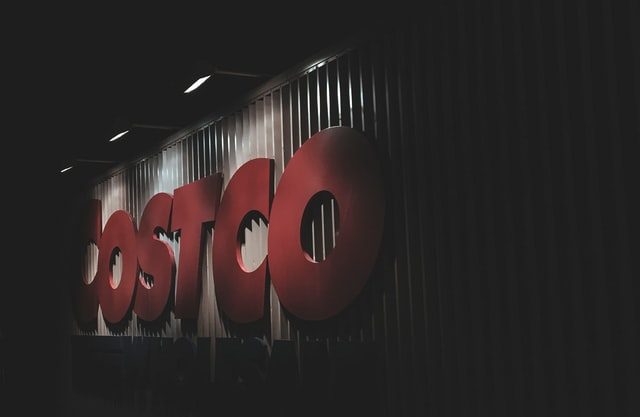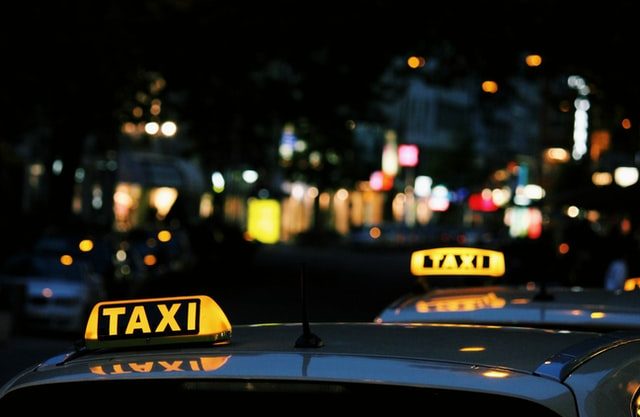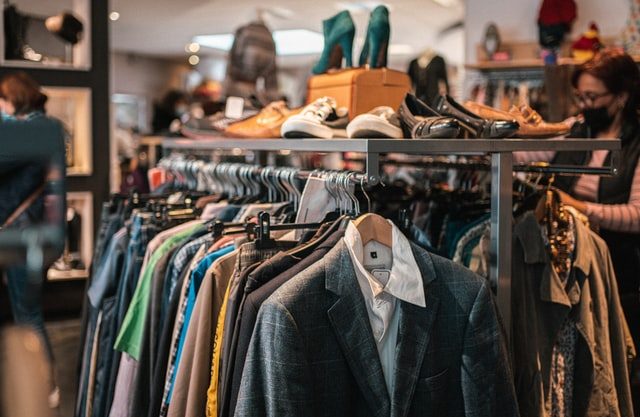I had bought a new dress and a pair of boots for my next day at work. I remember vividly getting a call from my supervisor saying to resume work from home until further orders. Slowly, the days turned to weeks, weeks turned to months (and now years), but still, I have not got the chance to flaunt the dress and the boots. As I pen down this piece, I could not help but think of the pile of clothes I had somehow crammed in my cupboard.
We all have a biased fondness for something or another. For some, it is food; for others, it is luxurious cars or trips; for me, it is clothes. I own many, but none if I have to step out (sounds familiar?)
The impact of fast fashion on the environment has been buzzing around for years. The actual wildfire spread(both in reality and metaphorically) during the pandemic when we started to ponder how much our closets cost the environment. As per the report curated by the World Bank, the fashion industry accounts for 10% of annual global emissions and, at this pace, it could reach 30% by 2030.
As it turned out, I am not alone. In 2008, Milda Mitkute found herself in the same chaos. Too many clothes, most of them unworn, and no storage place. The idea to start Vinted clicked to Milda when she discussed this concern with her friend and now the co-founder Justas Janauskas.
Initially, the launch of Vinted was just for the family and a few friends. The word spread soon and, Vinted became an instant hit in Lithuania. In the following year, the business expanded to Germany under the name- Kleiderkreisel. (The company later merged the Lithuanian and German users under the same brand – Vinted.)
After tasting success in Lithuania and Germany, the business was rolled-out in the Czech Republic. In 2011, Mantas Mikuckas became one of the early investors in Vinted and later became the COO. In the coming years, Mantas helped expand the business into global markets. Although Vinted is operational in around 15 international markets, this Lithuania-born unicorn has a maximum fan following in France.
In 2013, during Series A funding, Vinted raised €5.2M from Accel. Five years running, Vinted had started to grab the attention of investors. So far, Vinted has raised $562.3M in six funding rounds. The leading investors of Vinted are Accel, Insight Partners, Burda Principal Investments, Sprints Capital, Lightspeed Venture Partners, and EQT. This story will help you understand the business model and how does Vinted make money by selling used clothes?
Business Model of Vinted
Vinted’s mission is to make second-hand number one choice worldwide. As told by Natacha Blanchard, Consumer Lead at Vinted, the focus is to accelerate the transition from a take-make-waste economy towards a circular fashion economy. So what is Vinted, anyway?
Vinted is a C2C e-commerce marketplace, or you can say re-commerce, where individuals can buy, sell or swap their pre-owned, pre-loved clothes and other fashion accessories – this does sound like a perfect solution for the over-flowing wardrobe and the clutter. It is as simple as buying a new cloth from any other e-commerce site.
The members of Vinted or Vinties, as extolled, upload the photos and add additional details of the item on the platform. As the buyer proceeds to purchase the product, Vinted equips the seller with a pre-paid shipping label to ship the product. In simpler words, the buyer bears the shipping costs.
Vinted’s sustainable business model has the basis of Circular Economy. The clothes once produced can be moved from one individual to another as long as one needs to keep them, instead of being used once and later dumped in a landfill. You must be surprised to know that 87% of the total fiber input used for clothing is incinerated or disposed of in a landfill!
What is a circular economy and How is H&M Bringing the Circular Economy to the Apparel Industry?
The company till mid of the last decade had been performing well. Vinted reached 11 countries with 12 million users and 22 million listed items. The business was growing organically. However, there was no rock-solid business model or strategy for Vinted.
Unfortunately, in 2016 the company had hit rock- bottom. Vinted was on the brink of bankruptcy when Insight Partners, one of the investors, hired Thomas Plantenga to save the sinking ship, and he did. Thomas shut down the business in a few global offices, laid off a quarter of the workforce, and made an innovative change in Vinted’s C2C business model.
The plan was a hit! The company grew fourfold between 2016-18, garnered 22 million users, sales shore up, and investors came back knocking on Vinted’s door. As the fanfare continued, Thomas Plantenga got appointed as the CEO of Vinted in 2017.
Headquartered in Vilnius, Lithuania, as of May 2021, Vinted stands at a pre-money valuation of €3.5bn , with 50+ million users across 15 markets: France, Germany, Belgium, Spain, the Netherlands, Austria, Poland, Czech Republic, Lithuania, Luxembourg, UK, Canada, Portugal, Italy, and the USA.
Vinted is the first tech unicorn of Lithuania!
How does selling second-hand make money for Vinted?
Earlier, Vinted used to charge the sellers for every transaction. From the time Thomas Plantenga took over the reins of Vinted, he has pivoted strategy game. It is interesting to note that Vinted is among a few C2C companies that has turned around the tables of traditional e-commerce. Instead of charging the sellers, Vinted charges the buyers.
Following are the revenue streams that make money for Vinted:
- Buyer Protection Service Fee: Instead of charging the seller, Vinted charges the buyers 5% of the item price and a fixed amount of €0.70. The fee charged is in exchange for the services such as customer support, integrated secure payment system, and refund policy for delivery issues or articles not significantly as described. Thus, in a way, it is free to sell your clothes in Vinted.
- Wardrobe Spotlight: This unique paid feature spotlights the items listed by the seller in the marketplace. For seven days, the listed items are visible in the feed and catalog results of the fellow members.
- Item Bump: This is another interesting paid feature offered by Vinted. Item bumping enhances the visibility of the listed items in the marketplace. An item bumped will be visible to more members once a day for three consecutive days or until sold.
- Advertisement: Vinted also gains money by allowing third-party companies to promote their brands and products on its platform.
Success Recipe of Vinted
The success of Vinted’s business model relies on two factors – mass closing options on the platform and the ability to offer secure and fast sales.
Needless to say, the pandemic also fueled the success of vintage, second-hand clothing as most of us no longer felt the need for much of our clothes. The monetary benefits realized by the users by selling their clothes on Vinted are also a key aspect in its success.
As per Cross-Border Commerce Europe, Vinted is the crowned number one second-hand marketplace in the EU and UK.
Is the future Secondhand?
During the last couple of years of the global pandemic, consumers all over the globe have started to embrace slow fashion and second-hand apparel. The pandemic has forced all of us to stay at home, purge our wardrobes and rethink our expenditures. The prediction is that second-hand clothing sales will be twice, from $36 billion to $77 billion in 2025.
According to the insightful survey conducted by ThreadUp, in the year 2021, there were 52.6 million sellers, first-time buyers of second-hand clothes surged 33 million, and around 223 million consumers are said to be open to second-hand shopping. Undoubtedly, second-hand is here to stay and grow by 2X bigger than fast fashion by 2030.
As for Vinted, the future holds strong prospects. The company has acquired two firms – United Wardrobe in 2020, the largest second-hand marketplace in the Netherlands, and Chicfy in 2019. With United Wardrobe, Vinted will be penetrating international markets, and; with the acquisition of Chicfy, Vinted has reduced the competition in Spain. Moving forward, Vinted will be offering services such as buying and selling for charities of choice.
With the strong backing of investors, active leadership at the helm, and awareness of consumers on sustainability and affordability, Vinted is here to make a bigger and better impact.
-AMAZONPOLLY-ONLYWORDS-START-
Also, check out other insightful stories by the author

Marketing Strategy of McDonald’s that makes you “loving it”
How, after 70 years and running, McDonald’s remains our happy meal choice? The answer is in the magical marketing strategy and marketing mix (4Ps) of McDonald’s.

It’s Free but then how does Honey make money?
If the browser extension is for free, then how does Honey make money? What is so attractive in the business model that motivated Paypal to acquire it?

Costco’s business model of Customer Exclusivity
Costco is a membership-only retail company, which offers goods in bulk at competitive prices. We decoded Costco’s business model, how does it make money & marketing strategy

Ola’s business model- Everything You Need to Know
Ola has now become a giant with a variety of services like Ola Foods, Ola Cars, Ola Electric Mobility in its business model. How Ola is planning to succeed in each of the business segments?
-AMAZONPOLLY-ONLYWORDS-END-
















